Masterpiece Story: Wheatfield with Cypresses by Vincent van Gogh
Wheatfield with Cypresses expresses the emotional intensity that has become the trademark of Vincent van Gogh’s signature style. Let’s delve...
James W Singer 17 November 2024
Vilho Lampi’s Nocturne is a masterpiece of Finnish Expressionism that explores the complex relationship between the artist and his homeland.
Vilho Lampi (1898–1936) was one of the most notable artists of early 20th-century Finland. He spent the majority of his life living and working in the small northern Finnish town of Liminka which is approximately 600km north of Helsinki.
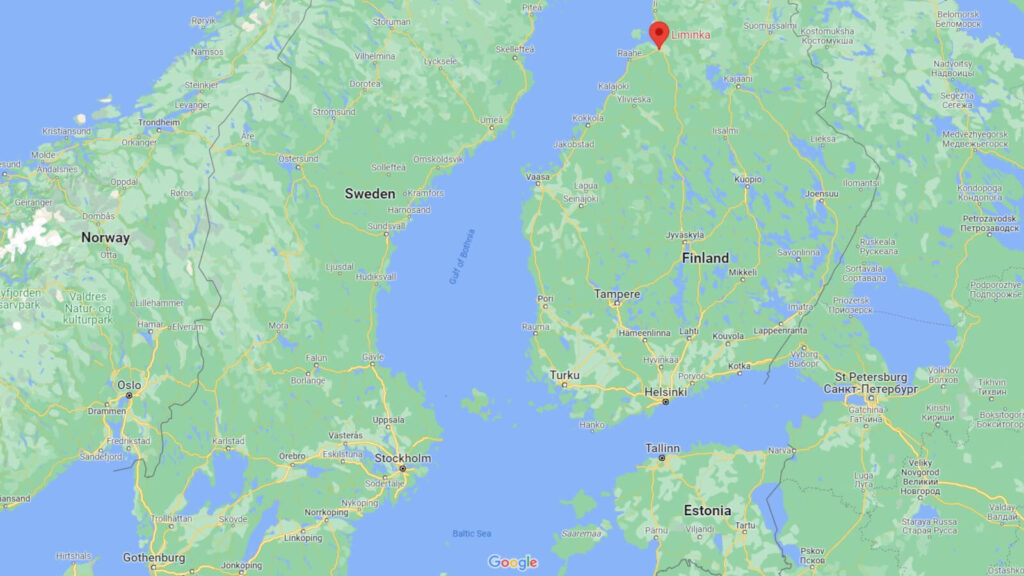
Liminka, Google Maps, digital image, 1 November 2023.
Liminka’s isolated countryside deeply inspired Lampi’s artistic explorations of defiant portraits and intense landscapes. Great themes of isolation, love, and death can be seen in his works. Nocturne is a Lampi masterpiece landscape that explores all three themes and encapsulates Lampi’s artistic brilliance.
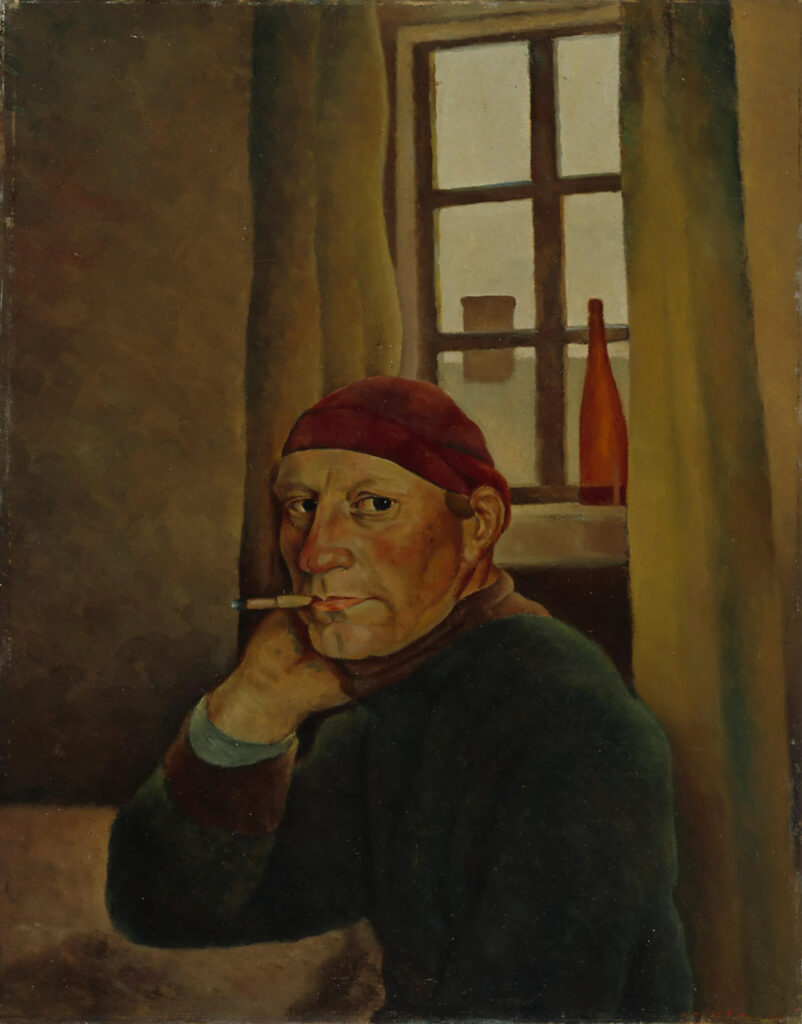
Vilho Lampi, Self-Portrait, 1933, Finnish National Gallery, Helsinki, Finland.
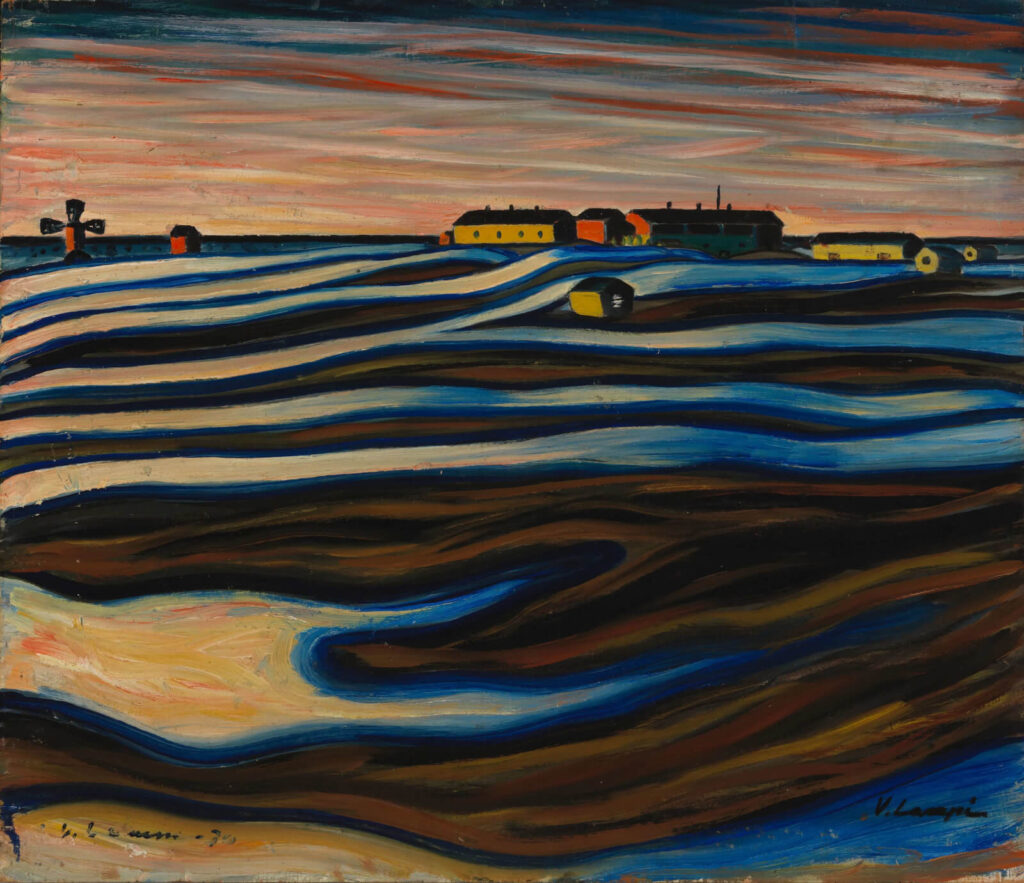
Vilho Lampi, Nocturne, 1930, Finnish National Gallery, Helsinki, Finland.
Vilho Lampi painted Nocturne in 1930 using oil on plywood. Its landscape orientation measures 70 cm wide by 60 cm high (27.5 in by 23.6 in). It depicts a farm with its farmhouse, windmill, and animal sheds. The man-made structures dot the high horizon line while the rich and luxurious arable land dominates the scene’s foreground. Using the artist’s lifetime geography and his affinity for local subjects, it is assumed the farm is from Northern Ostrobothnia, the region surrounding Lampi’s hometown of Liminka.
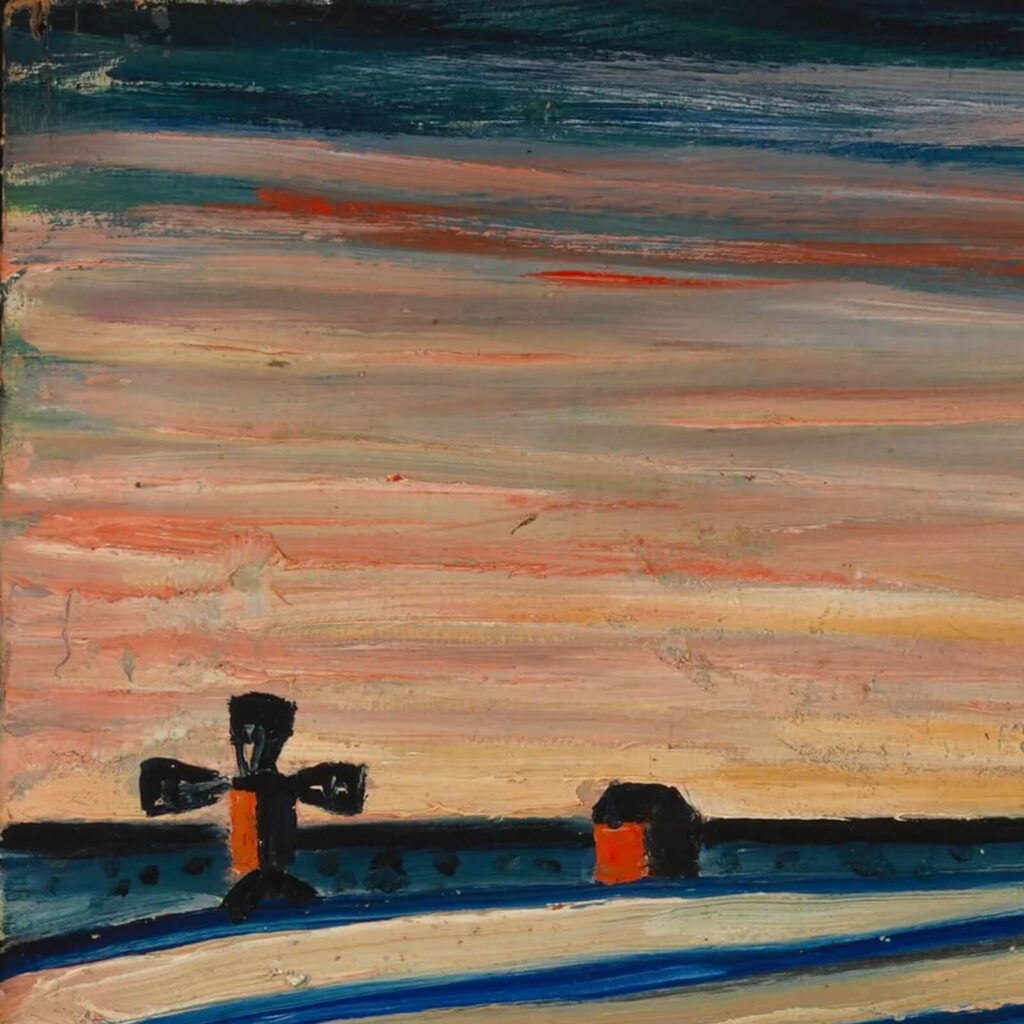
Vilho Lampi, Nocturne, 1930, Finnish National Gallery, Helsinki, Finland. Detail.
Vilho Lampi lived a dual life between working on his family farm and on his artistic career. Therefore, it is easily theorized that the farm in Nocturne is Matinlauri, the Lampi family farm. This theory seems substantiated by the acute emotionality implied by the intense colors, thick lines, and deep shading throughout the landscape. It captures a personal and dramatic perspective and not a visual reality.
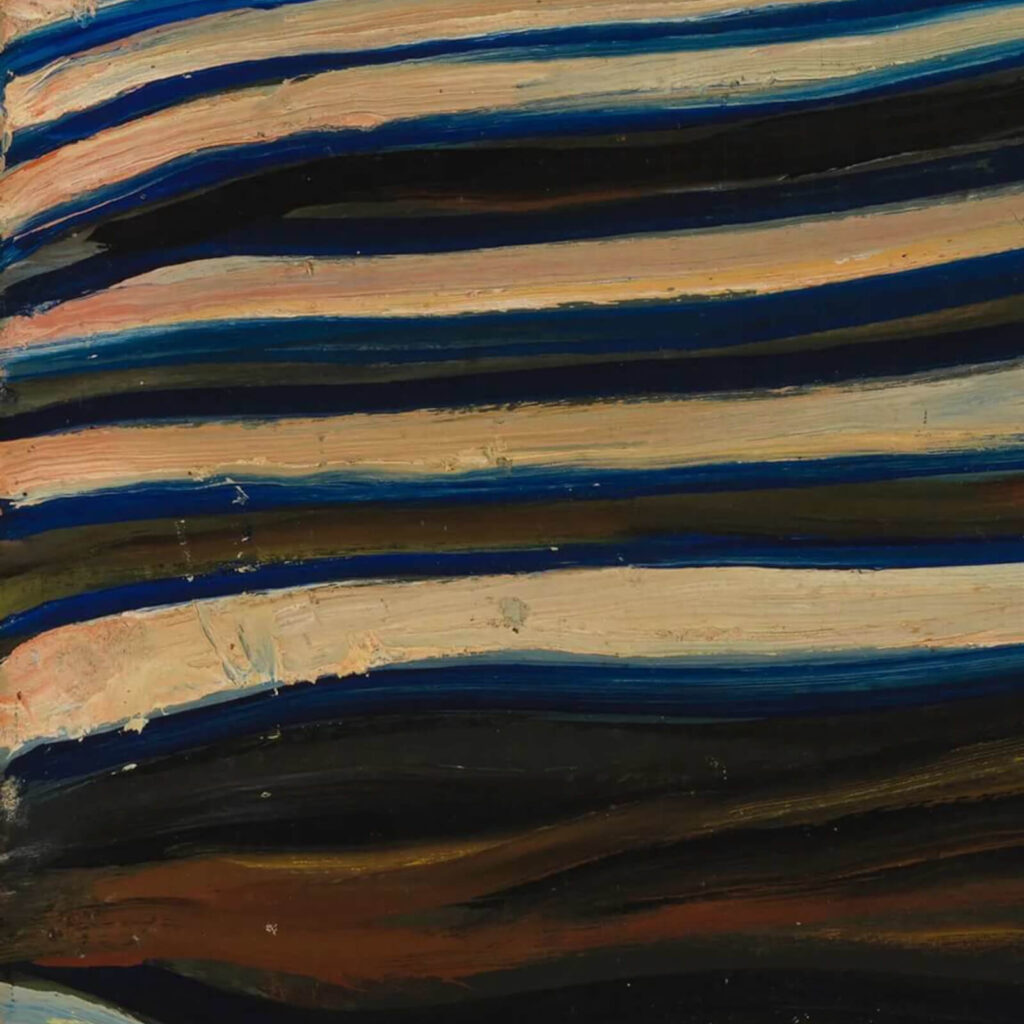
Vilho Lampi, Nocturne, 1930, Finnish National Gallery, Helsinki, Finland. Detail.
Many art historians have tried to classify Vilho Lampi’s artistic style, but none have succeeded due to stylistic shifts during his short but intense 14-year career. However, Expressionism would be the best candidate to label his style. The sky has an eerie glow that resonates energy felt in the sinuous and rhythmic landscape. The little buildings on the horizon are tiny, solid forms on a shifting and moving landscape. They are almost like ships bobbing in the ebbs and flows of a sea. Everything is permanently in flux.
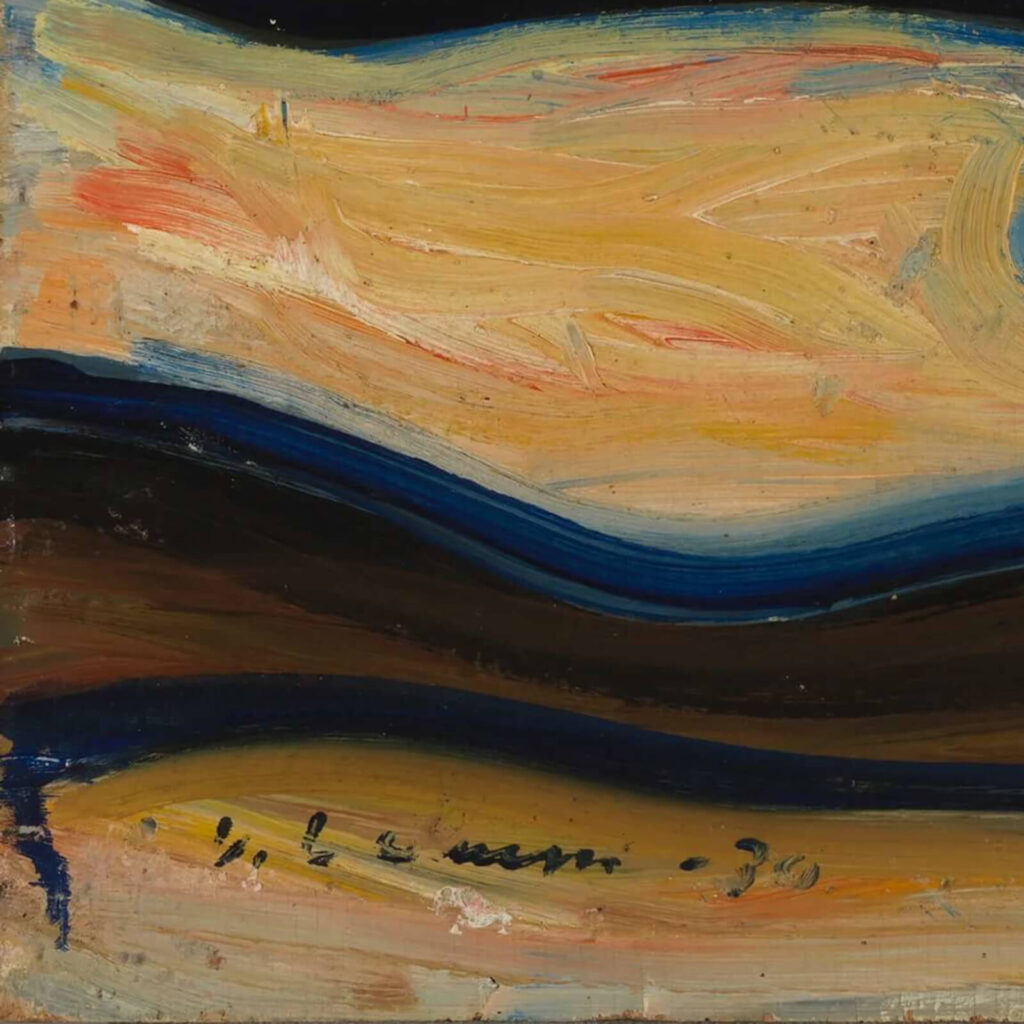
Vilho Lampi, Nocturne, 1930, Finnish National Gallery, Helsinki, Finland. Detail.
As the landscape stretches towards the horizon, the viewer can feel a great sense of isolation. There are no people, animals, or even plants to occupy the same space as the viewer. Simply land surrounds the viewer, and it creates a great distance between the viewer and the farm buildings. Therefore, what does the viewer feel in isolation? Does one feel disconnectedness, remoteness, and loneliness? Or, are there feelings of freedom, liberation, and expansiveness? Does Lampi imply a hatred towards his family farm? Is it oppressively overwhelming? Or does he imply a love for it? Is it comfortingly welcoming? The dichotomy of Nocturne is very intriguing because it lends a great flexibility to the viewer’s emotional response and interpretation of Lampi’s vision of farm life.
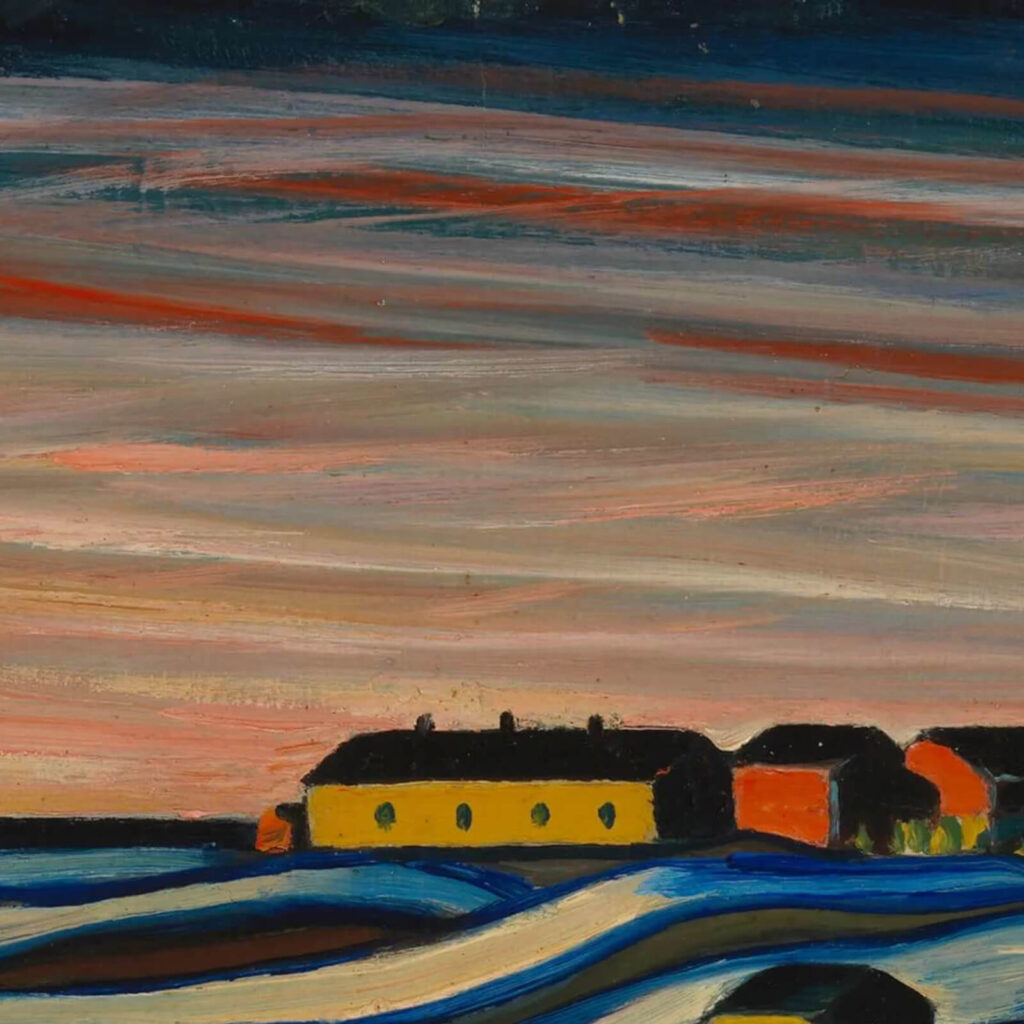
Vilho Lampi, Nocturne, 1930, oil on plywood, Finnish National Gallery, Helsinki, Finland. Detail.
Vilho Lampi began his formal artistic career in 1921 when he began attending Suomen Taideyhdistyksen Piirustuskoulu (Drawing School of the Finnish Art Association). By the time that he graduated in 1925, his friends and colleagues had already nicknamed him “Genius Lampi” because of his unparalleled energy and talent.
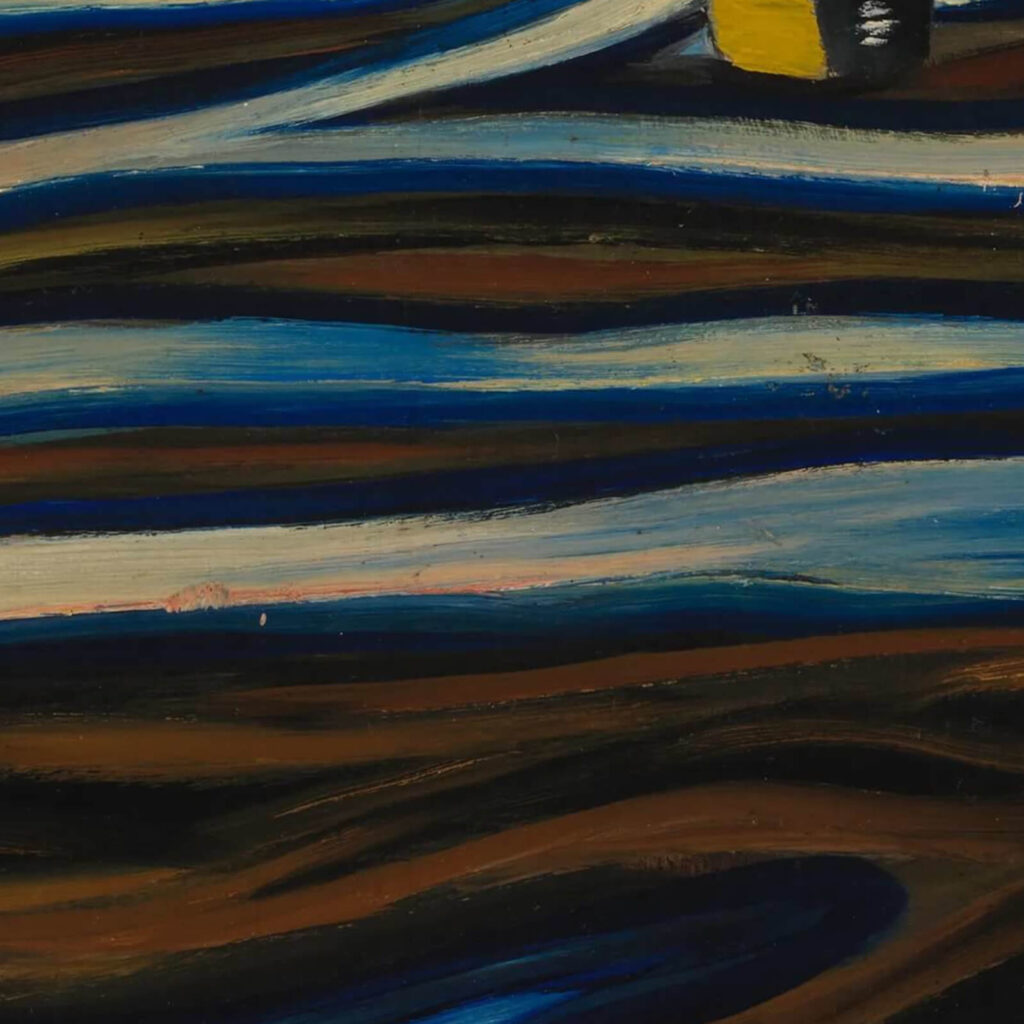
Vilho Lampi, Nocturne, 1930, Finnish National Gallery, Helsinki, Finland. Detail.
However, Lampi’s intensely passionate and sensitive nature was deeply troubled by undercurrents of depression and misery. He was constantly torn between the duties and responsibilities of Matinlauri and his passion and desire for painting. He viewed his life as a war between practicality and art. Sadly, his internal struggles ended by suicide when Lampi jumped from a railway bridge into the Merikoski Rapids of the Oulujoki River.
Vilho Lampi ended his life by suicide, but his artistic legacy lives on after his death. He created an immense legacy of 550 paintings in just 14 years. His intense artistic average of a new painting every 9 days showcases how passionately he lived life. He sought to capture the people and landscapes of Liminka that filled his life with such intense feelings.
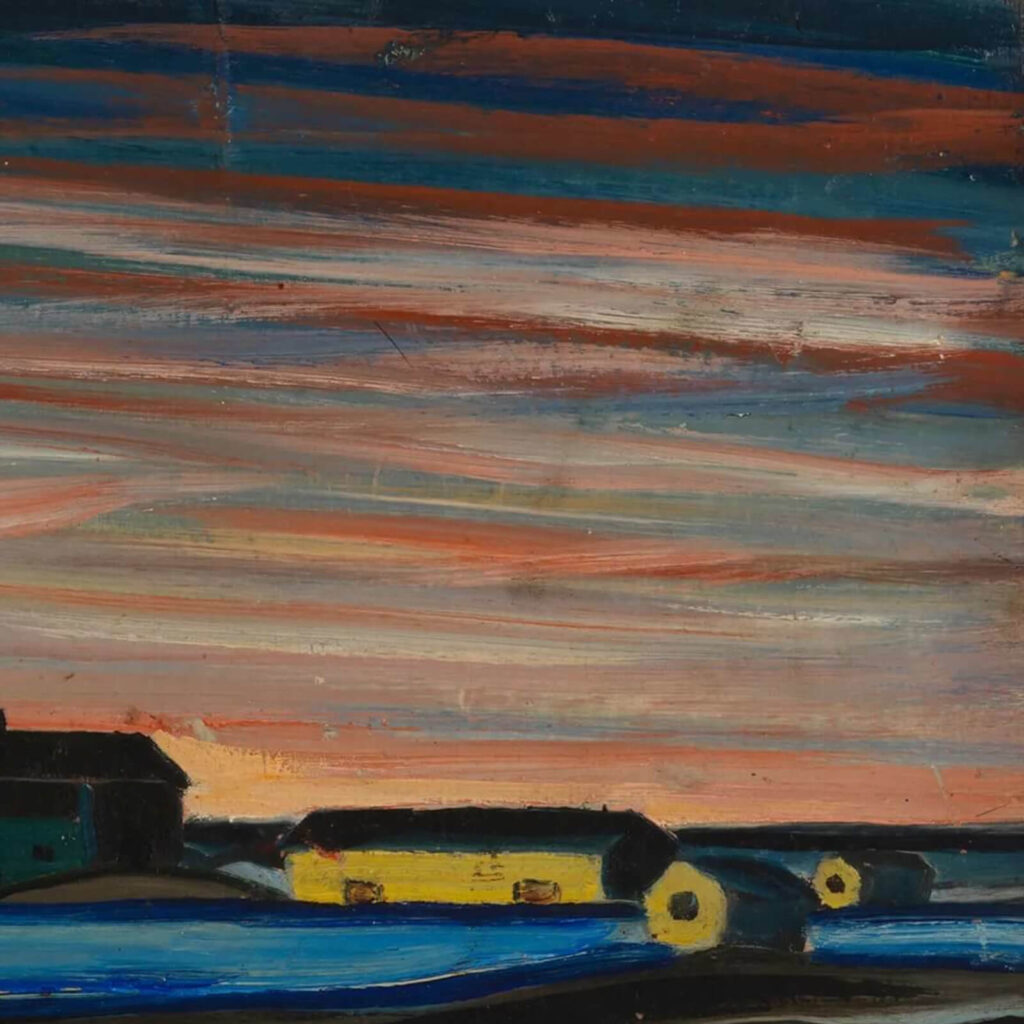
Vilho Lampi, Nocturne, 1930, Finnish National Gallery, Helsinki, Finland. Detail.
Nocturne now acts as an ambassador for Lampi and for his beloved Liminka to a larger audience by hanging in the Finnish National Gallery in Helsinki, Finland. Nocturne is a masterpiece of Finnish Expressionism that studies the love-hate relationship between the artist and his homeland. Liminka will always be linked to Lampi. Liminka is now considered a wholesome country getaway for the city-dwellers of Helsinki. Would Lampi laugh at the idea that his country images might now inspire city viewers to “escape” to the country? Would he be happy, angry, or sad? Whatever he would feel, he would certainly feel it intensely and that is exactly how he lived his life and painted his paintings. Lampi was passionate and living passionately is an art upon itself.
In the end, it’s not the years in your life that count. It’s the life in your years.
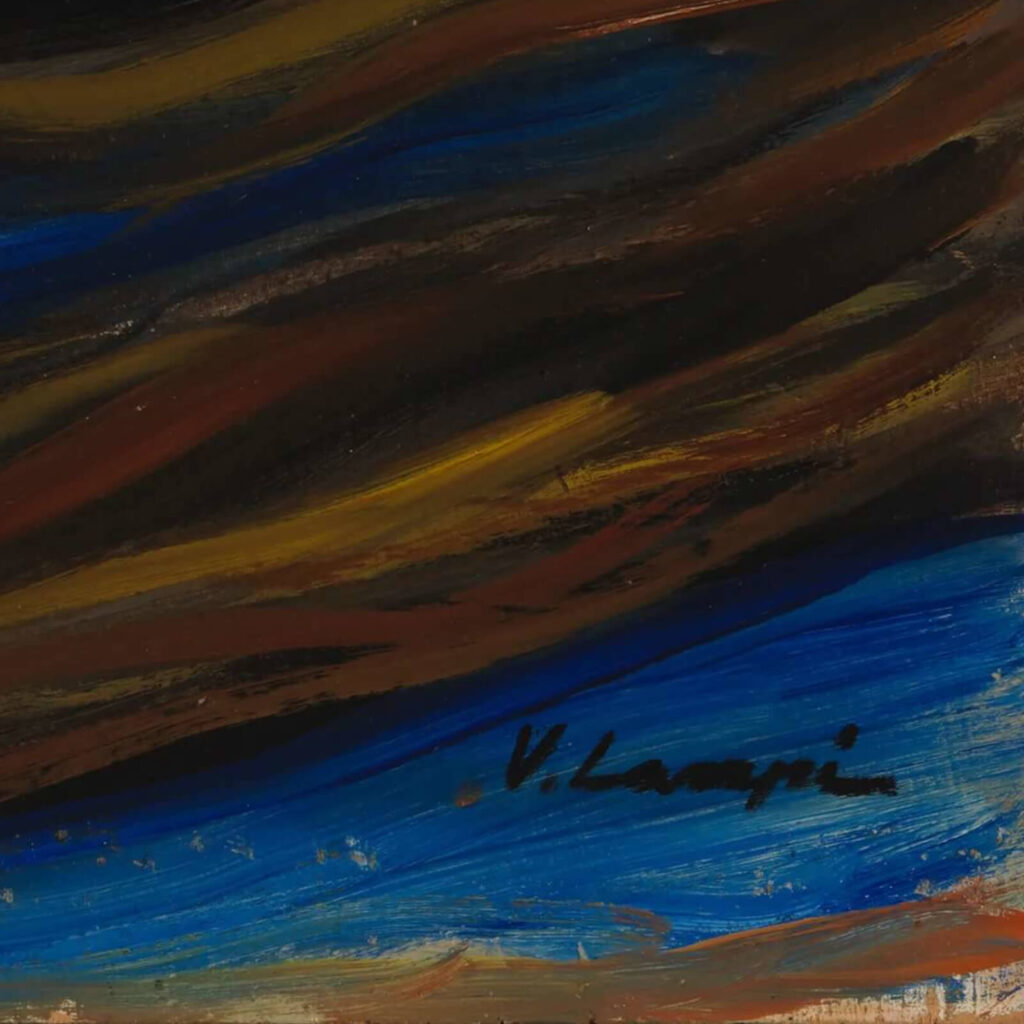
Vilho Lampi, Nocturne, 1930, Finnish National Gallery, Helsinki, Finland. Detail.
Gardner, Helen, Fred S. Kleiner, and Christin J. Mamiya. Gardner’s Art Through the Ages. 12th ed. Belmont, CA, USA: Thomson Wadsworth, 2005.
“Liminka.” Google Maps. Retrieved 1 November 2023.
“Nocturne.” Collection. Finnish National Gallery, Helsinki, Finland. Retrieved 1 November 2023.
“Self-Portrait.” Collection. Finnish National Gallery, Helsinki, Finland. Retrieved 3 November 2023.
“Vilho Lampi Museum.” Visit Liminka. Retrieved 1 November 2023.
DailyArt Magazine needs your support. Every contribution, however big or small, is very valuable for our future. Thanks to it, we will be able to sustain and grow the Magazine. Thank you for your help!